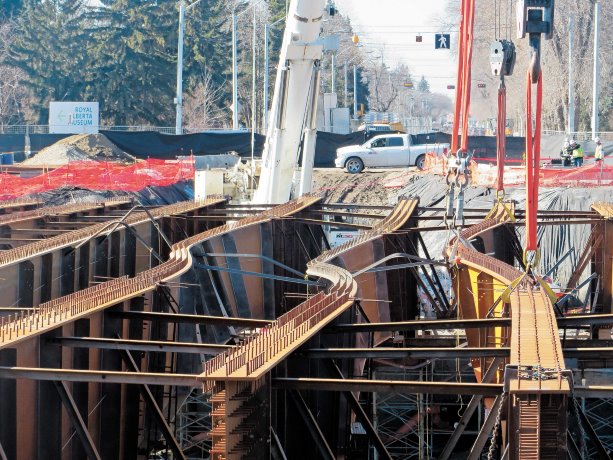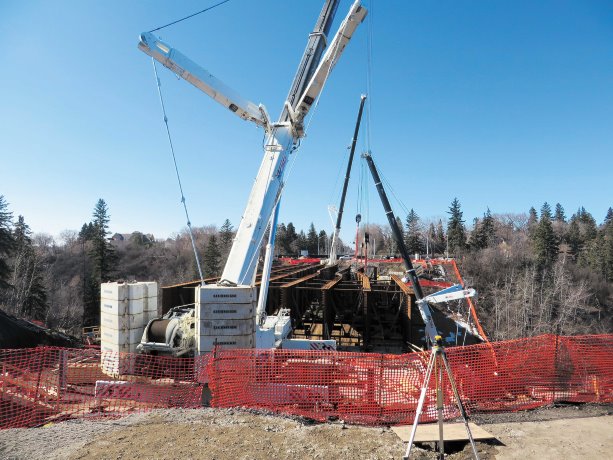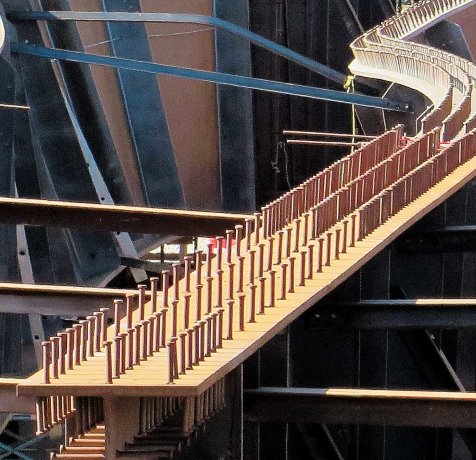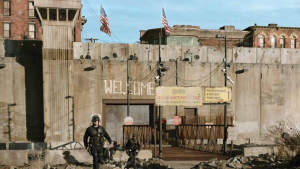Crews are working to stabilize buckled girders on an Edmonton bridge project so investigators can determine what went wrong.
In order to stabilize the girders, the project team has brought in a 1,200-tonne crane from outside Edmonton and is assembling it at the 102 Avenue site over Groat Road.
The weight of the girders will be transferred to the crane so that workers can inspect the girders and begin repairing or removing them.
City officials said that the final bridge completion schedule and project budget impacts are not yet known.
According to the city, Groat Road will remain closed to traffic for about three weeks as the city and its contract partners work to repair or remove four steel girders that buckled during installation for the 102 Avenue Bridge Replacement Project.
"Our next step is to stabilize the girders so that we can inspect them and determine what happened," said Barry Belcourt, branch manager of roads design and construction.
"Public and worker safety remain our top priority and we will not re-open Groat Road or allow people to work on the bridge until the girders are stabilized."
Belcourt said that once the girders are safe and stable, crews can begin repairing or removing the damaged pieces.
Once the bridge is re-stabilized, the crane can be removed and Groat Road can open.
"We understand the inconvenience the Groat Road closure is causing. We greatly appreciate everyone’s patience and understanding as we work to resolve the situation," he said.
The city has set up various detour routes and parking plans on nearby streets.
Traffic signals have also been adjusted.
On March 15, the city explained that work had been delayed because girders began to shift after being placed and needed more time to stabilize.
Additional delays were caused by high winds.
The general contractor on the project is Graham Construction & Engineering Inc., and AECOM was a consulting engineer.
Constructed in 1910, the old bridge reached the end of its lifespan and was demolished.
The replacement bridge has a clear span of about 100 metres and will maintain the existing four-lane configuration.
The new bridge is designed to accommodate two 2.1 metre wide bike lanes on the road shoulder and 2.2 metre wide sidewalks along the north and south sides.
The design of the new bridge includes stabilization of both the east and west slopes using soil nails, concrete deck with asphalt surfacing and upgrades to the drainage infrastructure.

1/2
The steel girders for an Edmonton bridge buckled and the cause of the failure is being investigated.
Photo: Eliza Barlow
2/2
A 1











Recent Comments
comments for this post are closed